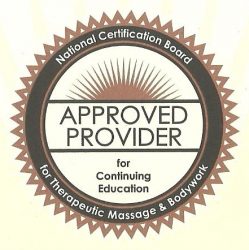The Commission on Massage Therapy Accreditation (COMTA) accredits educational schools and programs offering instruction in massage therapy and bodywork or esthetics and skin care. My first report on their finances was back in 2010, again in 2011, and again in 2013. It’s been quite a while since I checked in on them. As individual massage therapists, we’re not giving them our money in the form of membership dues, but I think it is in our interest to understand what they do. Disclosure: I was a COMTA reviewer for several years a long time ago. It’s not as simple as filling out an application and sending in the fee to get approved. it’s an arduous process and there’s a lot of documentation involved for school owners.
Schools can opt to pay for one of two levels of accreditation: institutional or programmatic. Once the school is approved, COMTA collects annual sustaining fees based on the level of accreditation; institutional members pay a percentage of revenue, and programmatic members pay by the number of students. You can see their entire fee list here.
There is also a category, “COMTA-Endorsed Curriculum,” which is for schools or programs that have not yet decided to take the plunge into accreditation, and has a less expensive separate schedule of fees.
COMTA is currently listing 71 schools on their website; the overwhelming majority are massage schools, with only a couple of esthetics schools listed. I had to click on every school listed to see which accreditation they actually have. The majority have institutional approval, a handful have COMTA-endorsed curriculum, and the rest have programmatic approval.
Since it’s been so long since I’ve reported on them, I’m listing some differences in filings over a 10-year period of time. Keep in mind that 990 filings from exempt organizations have a different filing schedule. I am listing these comparisons by the ending dates of the fiscal year. These filings can be found on ProPublica. COMTA is a 501(c)(3) entity.
Their last filing is for the fiscal year ending in February 2024.
Gross Revenue: $261,512. Total Salaries: $131,026. Of that figure, Dawn Hogue, the Executive Director, was paid $100,000 plus $7200 in other compensation. There are no other employees listed on the filing, so we can assume Hogue is running the office and doing administrative duties within her job description. COMTA Commissioners are volunteers and are not compensated. When I was a site reviewer, we usually traveled as a team of 2-3 people and we were not paid, but our travel expenses were paid by the organization. The total number of volunteers is listed as 24. The total functional expenses for the organization, which include attending conventions, accounting, normal office operation expenses, etc., totaled $247,234.
Let’s look at the filing for the fiscal year ending in February 2014 for comparison’s sake.
Gross Revenue: $397,670. That included $2000 in grants, which COMTA did not receive for the fiscal year ending in 2024. Their revenue had actually dropped substantially from the previous year (2023), when it was $481,773. Total Salaries: $208,457. Of that figure, Kate Zulaski, the Executive Director at that time, received $81,413 plus $6,890 in other compensation. There were 40 volunteers listed at that time. The total functional expenses were listed at $464,066, which is $66,396 less than they took in.
Years ago, COMTA received some substantial grants from AMTA.
As I wrote in 2013, COMTA grew out of the American Massage Therapy Association’s (AMTA) Program Approval Review Committee and the Commission on Massage Training Approval & Accreditation (COMTAA) organization. In 2002, COMTA was recognized by the Secretary of Education to accredit non-degree and degree granting institutions that offer massage and/or bodywork training programs. In 2004, COMTA separated itself from the AMTA, becoming an independent organization. The then-CFO at AMTA, Larry Liboda, told me in 2013, a couple of days before I published that blog, that they were no longer subsidizing the organization.
COMTA has hung on through recessions and COVID, which affected schools everywhere. They have assets and net balances of $491,306. That’s not a lot in the general scheme of things. If another recession hit tomorrow, they still have to pay someone to run the organization. They still have to pay for utilities, insurance, accounting services, banking fees, and the miscellaneous expenses of running an organization.
I’ve always thought COMTA was a good organization for massage therapy schools, which trickles down to excellence in education for massage therapy students. I know many school owners who have refused COMTA accreditation because “I’m not going to have anybody telling me what I have to do.” But COMTA standards are actually high. Their Self-Study Report, which places schools under no obligation to seek COMTA approval, is available on their Forms page. I encourage school owners to download it. It might help you see where there’s room for improvement. Isn’t there always?


